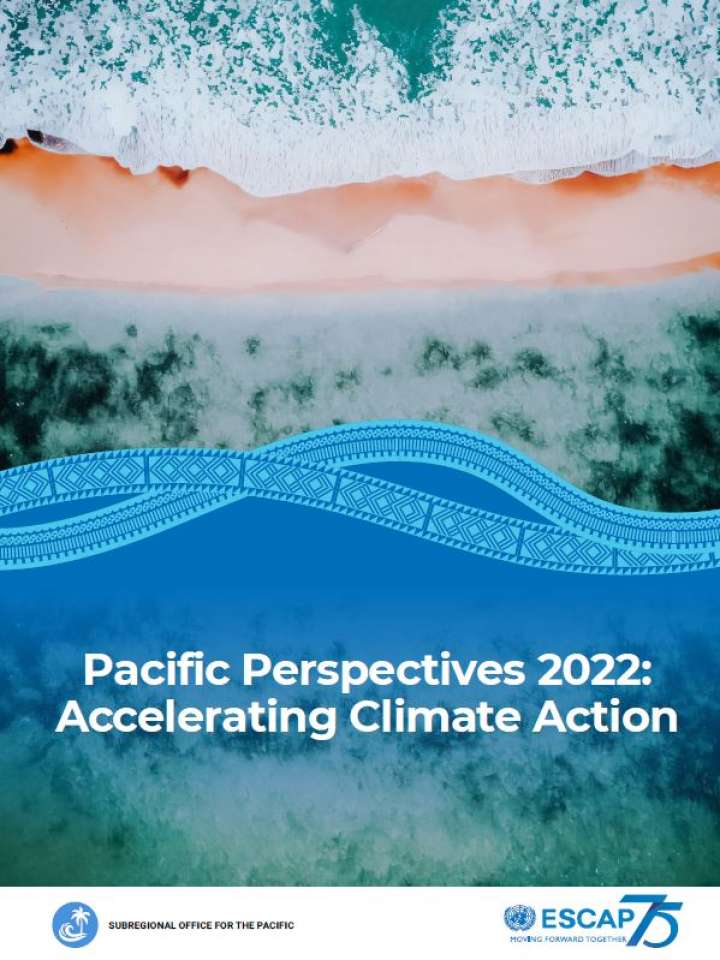Pacific perspectives 2022: accelerating climate action
In this report, the Subregional Office for the Pacific of the United Nations Economic and Social Commission for Asia and the Pacific (ESCAP) pulled together the latest reports and evidence on climate change in the Pacific subregion. A major theme which emerged was the need to integrate climate change considerations across the various sectors, which could foster synergies between different policy areas to achieve climate goals.
Chapter 1, Tackling the disaster-climate-health nexus looks at the complex relationship between natural hazards, climate change and biological hazards which affect people’s health. While the number of fatalities from natural disasters has gone down in the PSIDS, the number of people affected has risen from 1.2 million to 5.5 million in the last decade. This has been partly due to the rising frequency and growing intensity of natural hazards, with COVID-19 adding another layer of vulnerability in the last few years. The chapter highlights the climate and biological hazard risk hotspots in PSIDS according to future scenarios given by the Representative Concentration Pathway (RCP) and Shared Socio-economic Pathways (SSP) analyses, including increasing extreme events like floods and related biological hazards.
Explore further
